
Rope of Sisal Plant, Agave Sisalana, Plantation at Fort Dauphin in Madagascar Stock Photo
1. Overview of Sisal Plant. The Agave sisalana plant, commonly known as sisal, stands as a prime example of nature's ingenuity. These succulent, native to Mexico plants require well-drained soil and abundant sunlight to flourish, making them well-suited to semi-arid climates. Among their parts, the plant's succulent leaves are the key source of sisal fiber.

PlantFiles Pictures Agave, Sisal Agave, Hemp Agave, Century Plant, Maguey 'Variegata' (Agave
sisal, ( Agave sisalana ), plant of the family Asparagaceae and its fibre, the most important of the leaf fibre group. The plant is native to Central America, where its fibre has been used since pre-Columbian times. Commercial interest in sisal was stimulated by the development of the machine grain binder in the 1880s, which brought a demand.
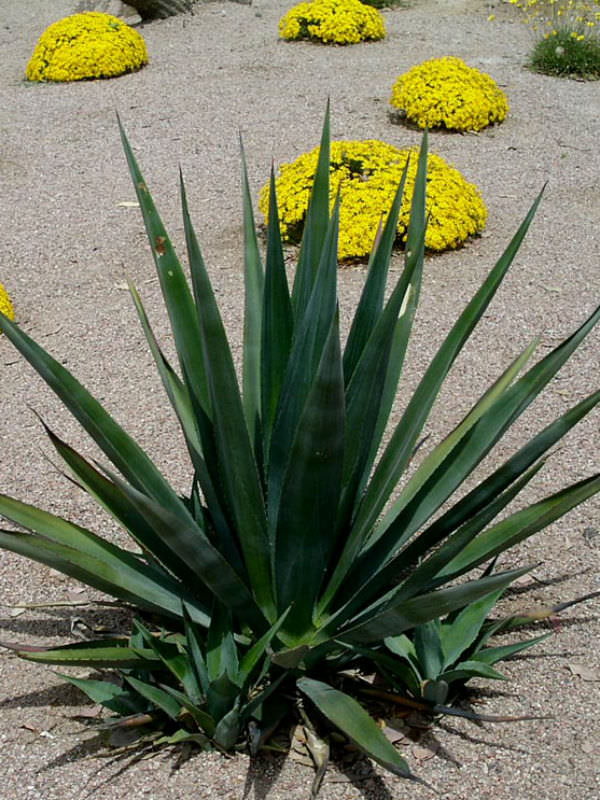
Agave sisalana Sisal, Hemp Plant, Mescal World of Succulents
With this in mind, Agave sisalana (Sisal) is a promising candidate (Fig. 1c). Sisal is a robust and drought tolerant plant 62 traditionally used in the manufacture of cordage due to its strength.

Variegated Sisal Agave Care and Propagation Guide Succulent Alley
Sisal (Agave sisalana) is a beautiful, perennial succulent plant, up to 2 m tall with a short stem and sword-shaped leaves extending from a basal rosette. The leaves are up to 10 cm wide and up to 1.5 m long with a sharp dark brown spine at the end, grey-green in color. A branched inflorescence forms atop a flower stalk up to 9 m tall with.
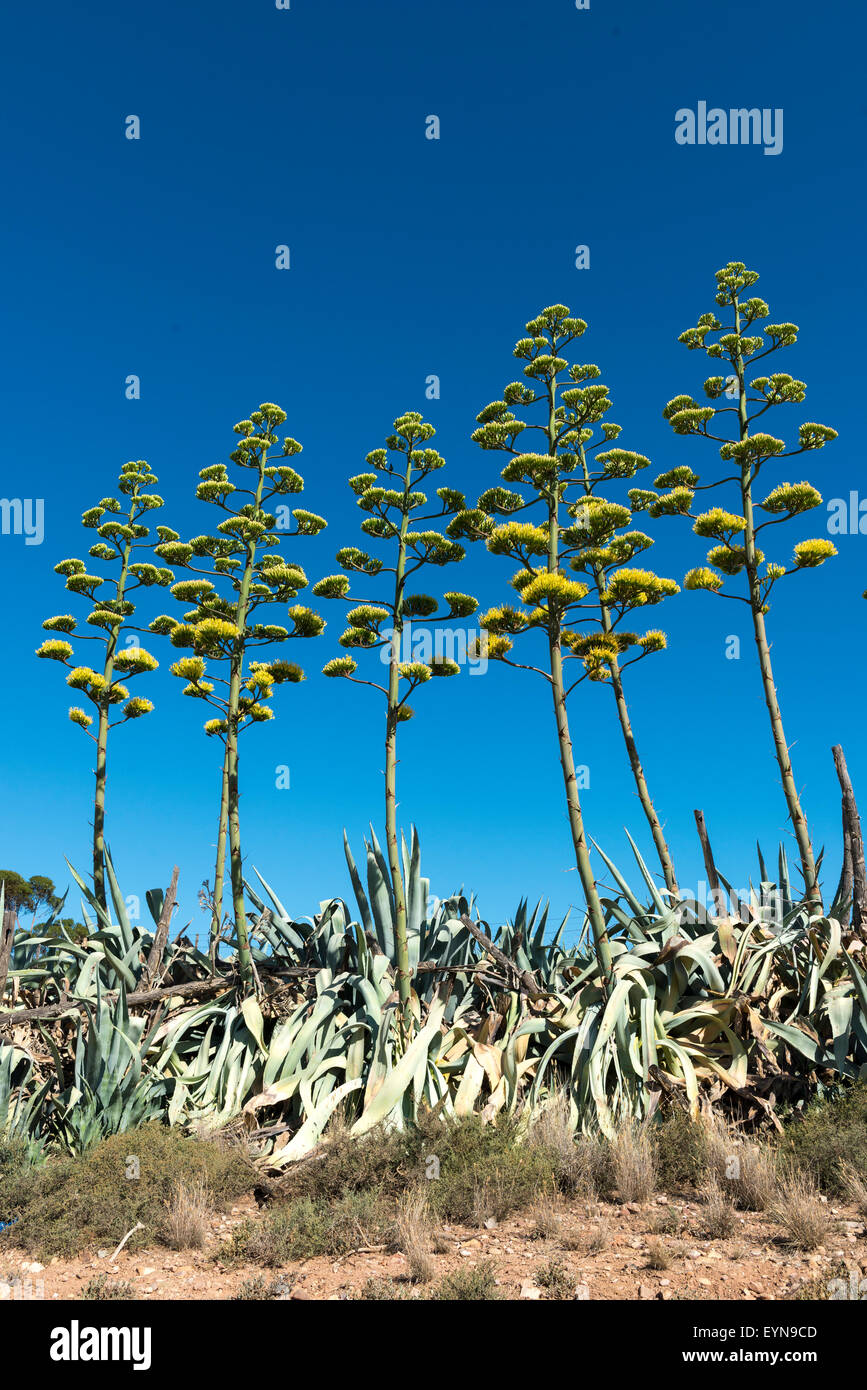
Landscape flowering sisal plants agave hires stock photography and images Alamy
Fibre production from Agave fourcroydes also has a long history in Mexico. Henequen, sometimes also called sisal, was produced during the Mayan era (Colunga-GarcíaMarín and May-Pat, 1993, 1997; Colunga-GarcíaMarín, 2007).This fibre provided the foundation for a rope and twine industry that expanded in the 1800s and peaked in the mid-1900s (Evans, 2007).
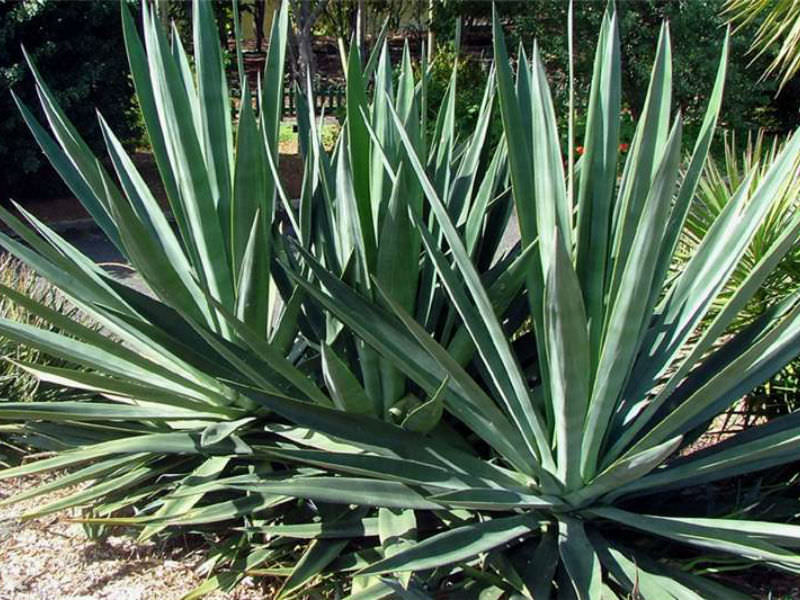
Agave sisalana Sisal, Hemp Plant, Mescal World of Succulents
Using a common plant. Researchers from Stanford have managed to achieve this by using fibers from the readily available sisal plant, Agave sisalana, and transforming them into highly absorbent.

Young sisal (Agave sisalana) plants Young sisal (Agave sis… Flickr
The origin of Agave sisalana is in Central America, probably in southern Mexico based on the strength of traditional local usage (Gentry 1982).In the nineteenth century, sisal cultivation spread to Florida, the Caribbean islands, Brazil, parts of Africa notably Tanzania, Kenya and Madagascar, Asia, the Pacific Islands and Australia where it has become naturalized.
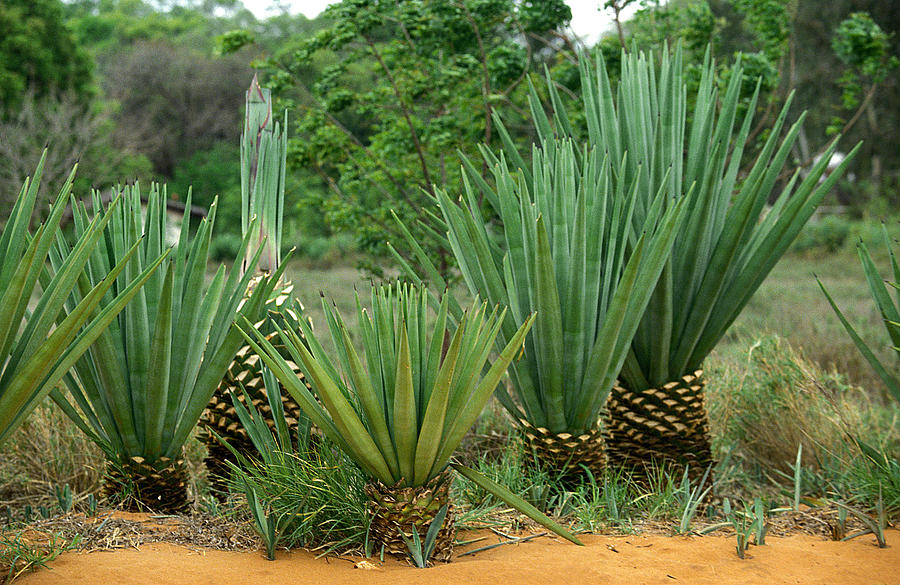
Sisal Agave Sisalana Photograph by Gerard Lacz Fine Art America
Agave sisalana grow and care - Succulent of the genus Agave also known as Sisal plant, Agave sisalana perennial evergreen plant, the plant dies after the bloom and the young plant grow instead and also used as ornamental and also drought tolerant, can grow in desert, subtropical, mediterranean, tropic or temperate climate and growing in hardiness zone 10+, with the right care overwinter can.

Sisal (Agave sisalana) Flower, Leaf, Care, Uses PictureThis
Some common names for agave plants include century plant, maguey, and sisal. In Mexican culture, agaves are considered a symbol of purity, strength, and health. Some varieties were used by the Aztecs to create a fermented drink called pulque, which was a precursor to tequila, which is now made from the blue agave plant (Agave tequilana).

Sisal Plant. A sisal plant (Agave sisalana) seen in Northern Tanzania (Africa). , Ad, Agave,
The plant Sisal fibres are obtained from Agave Sisalana, a native of Mexico. The hardy plant grows well all year round in hot climate and arid regions which are often unsuitable for other crops. Sisal can be cultivated in most soil types except clay and has low tolerance to very moist and saline soil conditions. Husbandry is relatively simple.

Sisal Agave Plant, Fibers & Uses Britannica
This work was funded by the National Science Foundation and the Bill & Melinda Gates Foundation. Sustainable, plant-based menstrual pads could improve access to hygiene products - by Laura Castañón - Stanford Engineering - November 30, 2023. From left, Anton Molina, Anesta Kothari, and Manu Prakash show the sisal fiber and the cotton-like.

Sisal Plant, Agave Sisalana, Plantation in Madagascar Near Fort Dauphin Stock Photo Image of
Sisal (A. sisalana), henequen (A. fourcroydes), and cantala (A. cantala) are significant sources of fibre and are of interest as potential bioenergy crops. The century plant, or maguey (A. americana), and blue agave are the primary sources of agave nectar, a syrupy sweetener. Additionally, a number of species are grown as ornamentals in desert.
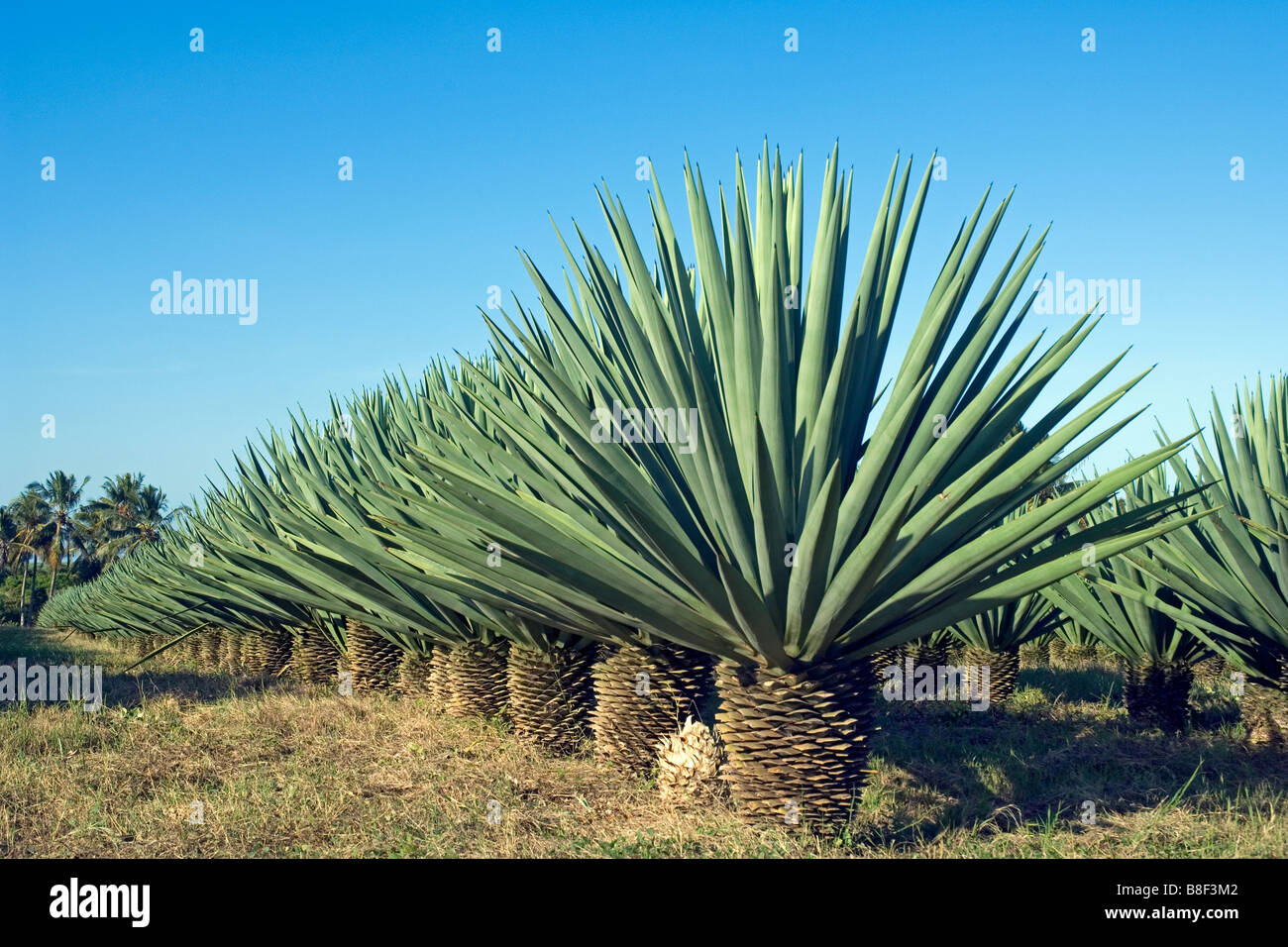
Sisal plants (Agave sisalana) yield a stiff fibre traditionally used in making rope Sisal
sisal. Binder twine, cord, and some rope are made from the fibrous leaves of two species of the agave plant. Both species are commonly called sisal. The name sisal comes from the name of the Yucatán port from which sisal fibers were first shipped. One species of agave is the true sisal ( Agave sisalana ).
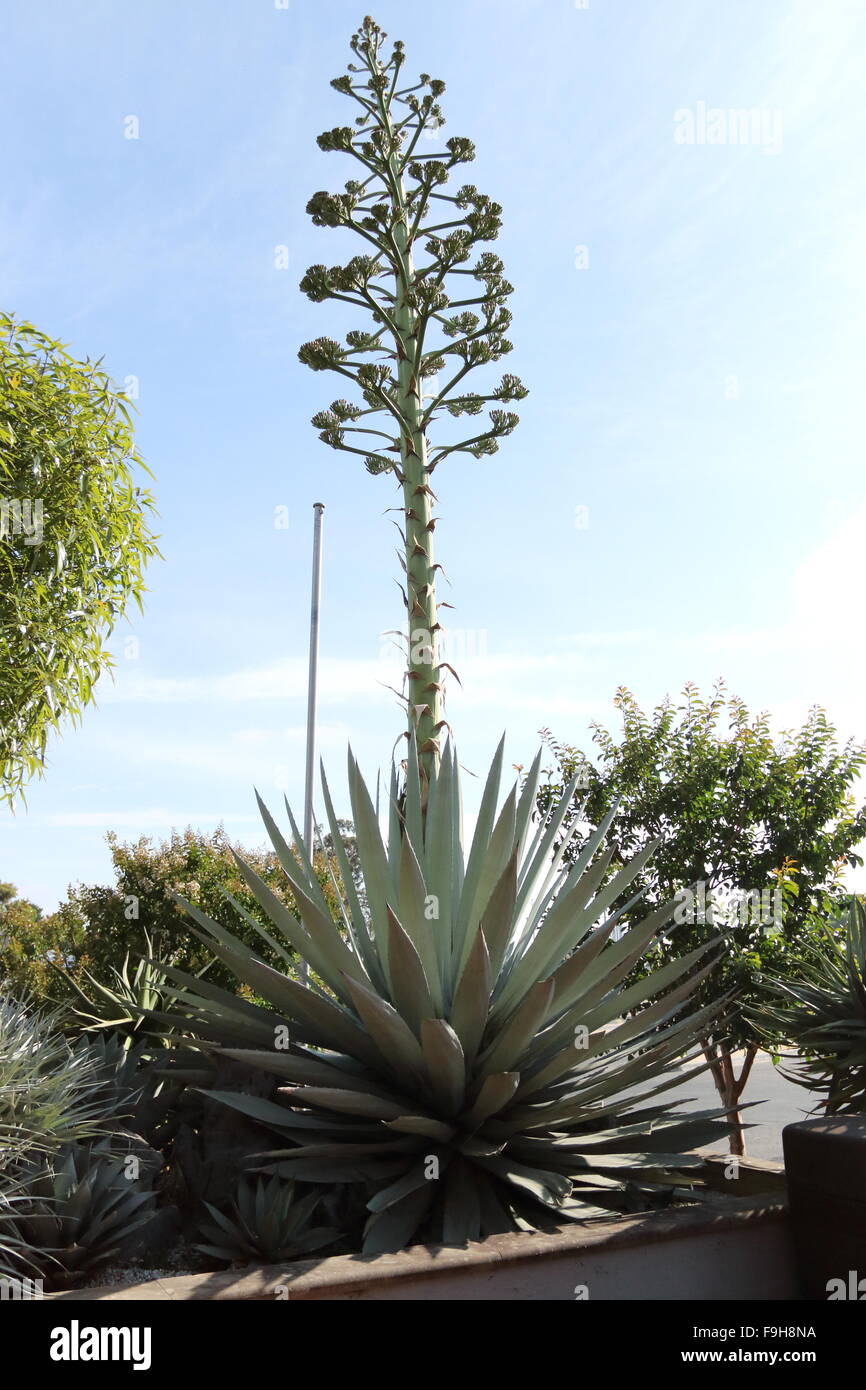
Agave sisalana Perrine or also known as Agave sisalana Sisal with flowers Stock Photo Alamy
Sisal (/ ˈ s aɪ s əl /, Spanish:; Agave sisalana) is a species of flowering plant native to southern Mexico, but widely cultivated and naturalized in many other countries.It yields a stiff fibre used in making rope and various other products. The sisal fibre is traditionally used for rope and twine, and has many other uses, including paper, cloth, footwear, hats, bags, carpets, geotextiles.
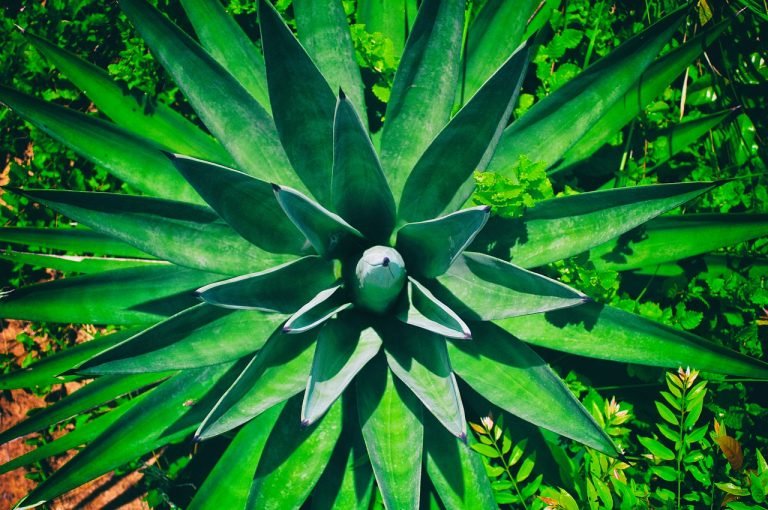
Sisal Plant Cultivation, Processing And Uses
The plant base is a short trunk (30-150 cm), from the top of which the spirally arranged leaves grow ( DAFF, 2015 ). The components of the dry weight of sisal fibre are approximately 55-65% α-cellulose, 11-18% hemicelluloses, 7-15% lignin, 1% pectin and 1-8% ash ( Elzebroek and Wind, 2008 ). Leaves.

Sisal Plant, Agave Sisalana, Plantation Near Fort Dauphin in Madagascar Stock Photo Image of
Agave spp. that are grown for fiber have long straight leaves from which long fibers can be harvested for rope and fabrics.Agave sisalana (sisal) is the most widely cultivated, primarily in Africa and South America, where this crop occupied roughly 420,000 ha in 2010 declining from 890,000 ha in 1961 [].Another fiber variety, A. fourcroydes (henequen), is mainly grown in Mexico and occupied.